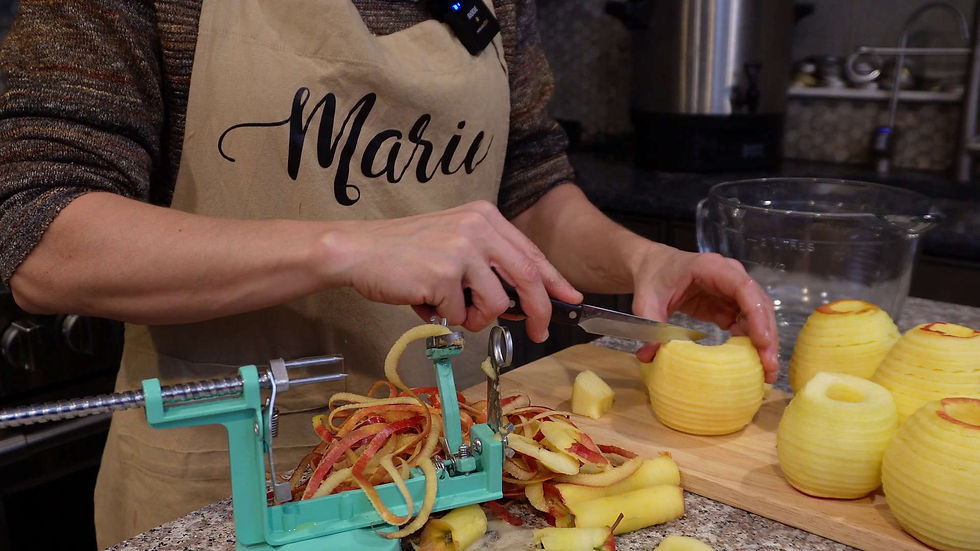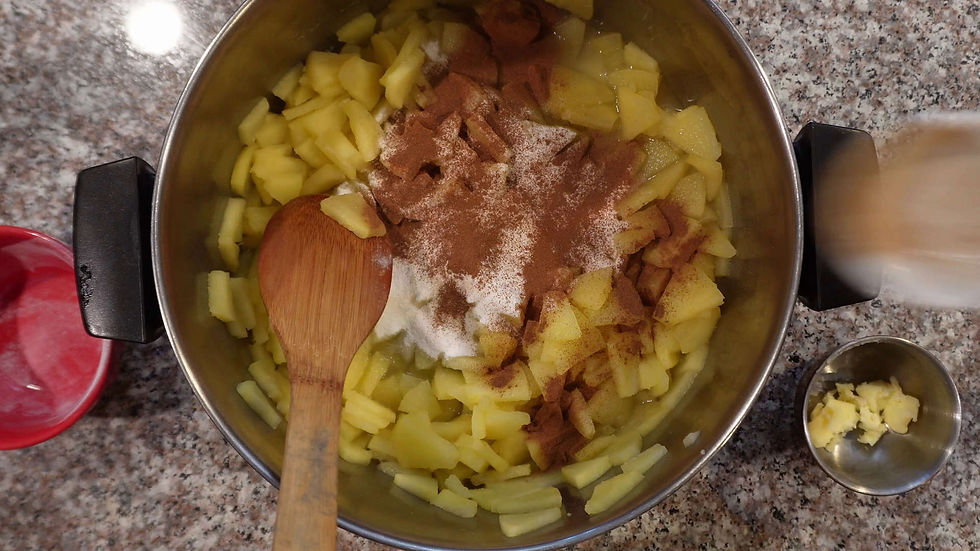Apple Preserves
- Marie Overton

- Jul 9, 2023
- 2 min read
Updated: Jun 7
Homemade Apple Preserves is a beautiful item to have in your long-term food storage pantry. Preserves are exactly that, a delicious way to preserve fruit’s flavor. They taste wonderful and make great gifts. This recipe is particularly great because it is sweet and thick and tastes good on so many things. I like to use apple preserves on pancakes, and waffles, and as a topping for ice cream or even toast.
Ingredients
6 cups apples (peeled, cored, sliced)
4 cups sugar
1 cup water
6 tablespoons pectin
3 tablespoons lemon juice
1 teaspoon cinnamon
1/2 teaspoon nutmeg
1/2 teaspoon butter
How to Can Apple Preserves
These directions and recipes make 6 half-pint jars.


The first step is to wash, peel, core, and slice apples. I like to use my apple peeler, slicer, corer and a paring knife for this.

Next, mix, apples slices, water, and juice in a large pot and simmer for 10 minutes.
Add the rest of the ingredients except the sugar and nutmeg and bring it up to a boil.

Add the sugar and return it to a boil. Boil it hard for 1 minute.

Add the nutmeg and mix well.

Using a jar funnel, fill your hot jars leaving a 1/4 inch headspace. Wipe the rim of the jar with a clean damp cloth and de-bubble with a chop stick if necessary.
Place the lids on top of the jars and add the rings.
(For quality, American-made canning lids and jars click here and use the coupon code WP20 to get 20% off your purchase.)
Tighten the rings to fingertip tight and process in a boiling water bath canner for 10 minutes if at sea level. Remember to adjust the processing time for your elevation if higher than 1000 feet.

When the jars are done processing, turn off the heat, remove the lid, and allow them to cool for 5 minutes. Then, take the jars out of the water bath and allow them to cool on a heat-resistant surface with about an inch in between each jar.

After 24 hours, check for a good seal. Remove the rings and wash off the jars paying particular attention to the threads. Store in a cool dark place. Home canned goods are best used within 3 years. After that, the nutritional value begins to decrease.
If any of your jars do not seal, place them in the refrigerator and use them right away.
If you have any questions about canning with the boiling water canner or how to adjust the pressure for altitude, take a look at my canning basics videos.


























Comments